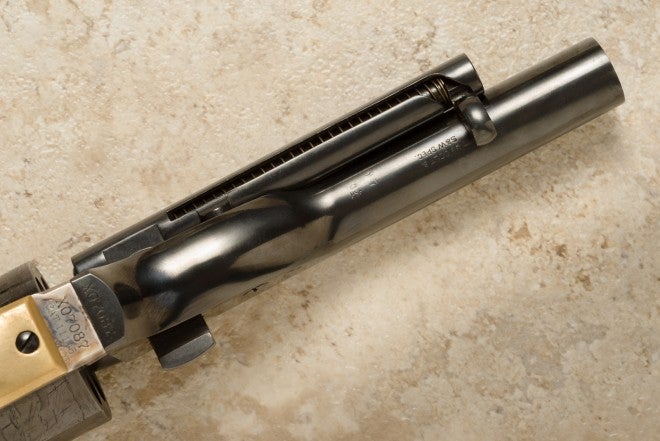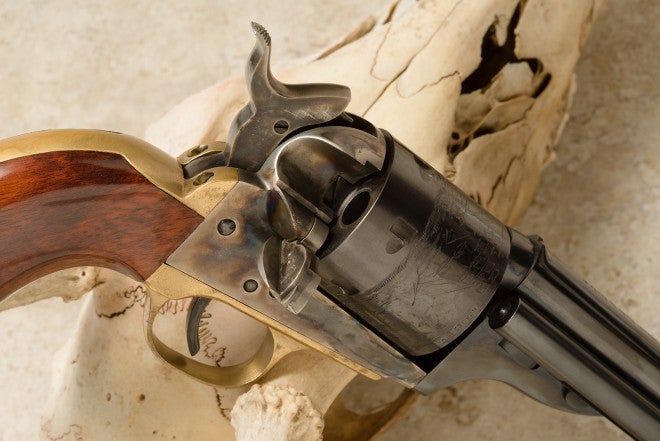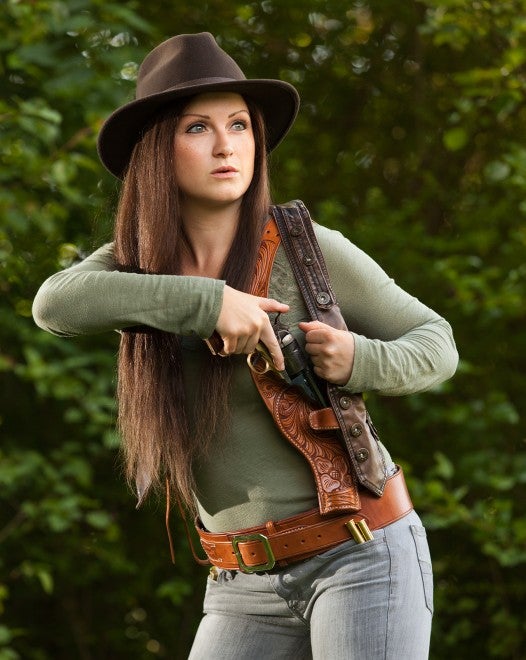Cimarron Colt Navy Centerfire Conversion
Oleg Volk 06.08.15

Last year, I finally determined that most historic guns aren’t for me. I am just not as fond of the process of loading a percussion revolver, or worse, a flintlock, as I am of shooting and making hits. That sentiment was shared pretty widely in the 1860s and 1870s, when quite a few percussion guns were converted to rimfire and centerfire cartridges. Percussion Colts, in particular, were converted to .38 rimfire–and that round was no ballistic slouch at 750fps with 150 grain heeled bullet! Soon after, purpose-made rimfire revolvers were made for military use, most of them similar to the percussion models in look and feel. Unfortunately, rimfire .38 ammunition hasn’t been made since the 1940s.
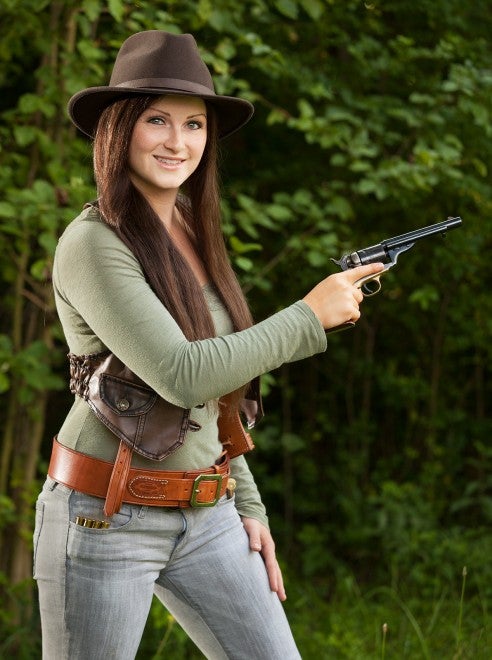
Fortunately, a reasonably priced .38 Special version of 1872 open top Navy revolver is made by Uberti and imported by Cimarron. With 5.5″ barrel, it balances well and proved very pointable. It feels lighter in hand than its actual 34 ounces. The longer barrel compensates in good part for the rear sight placement on the back of the barrel, just forward of the cylinder gap. Together with a thin front sight, it provides a quick and fairly precise sight picture.
Like the rimfire conversion, this revolver uses a side-mounted spring-loaded ejection rod. The rod only becomes necessary after a long range day, as most of the empties slide out under their own weight once the loading gate is open.
Loading is done conventionally for single action revolvers, with the hammer at half cock and the gate open. Since the firing pin is integral to the hammer, loading five rounds with an empty chamber under it would be the safest course.
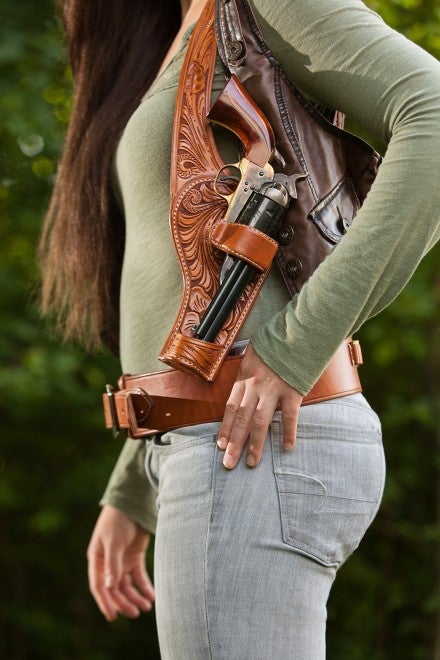
Live fire with this revolver contained two surprises. Felt recoil was extremely light. With Federal target wadcutters and semi-wadcutters, it felt like a .22 rimfire, quiet and almost stationary in hand. With defense ammunition and full-power ball, you could tell a shot fired but far less than with a typical K frame. The flared grip shape is probably the main reason, along with the open top cylinder gap acting as a slight compensator relative to solid frames. Contrary to expectation, I did not perceive the cylinder gap flash in the line of sight even at dusk; it must have been too transient an event.
The second surprise was the trigger. If you ever wondered why the finger should stay away from the bang-switch until the sights are lined up, this gun illustrates the point wonderfully. At 3.4 pounds, the trigger pull isn’t any lighter than most modern single actions, but the complete absence of take-up made the break a surprise, especially when wearing gloves. The trigger guard is small enough to make unintentional discharge possible. Of my first hundred rounds, at least four were touched off before I expected them to fire.
Between the crisp trigger and clear sights, practical accuracy was quite exceptional. At seven yards, all five or six rounds would reliably land in a touching pattern no more than an inch wide and sometimes closer. Hitting at pop can at 25 yards isn’t a great challenge, and a B27 silhouette is unsafe at 50. Horizontal alignment was perfect, suggesting that the gun was factory regulated. Vertical zero ranged from 7 to 12 yards, depending on the bullet weight.
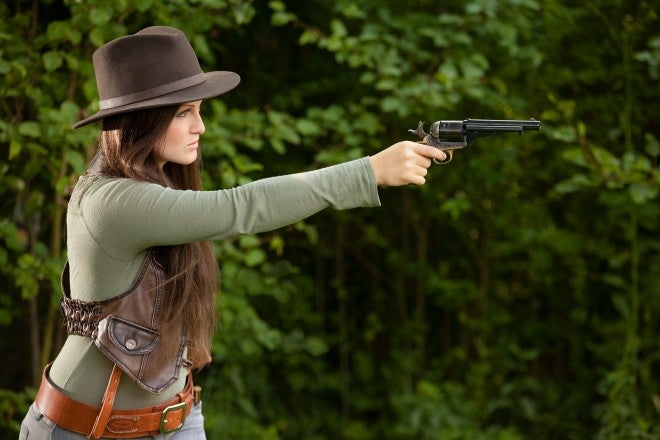
The fit and finish of this revolver are very good. It shoots well, but is it practical for self-defense or hunting? In my opinion, better defensive choices exist, but this one would do if nothing else was available. Thanks to the common chambering, it can fire effective modern loads so long as they are loaded to standard pressure. For hunting small game, it would do perfectly fine thanks to the excellent accuracy and reasonable power. And, of course, it would do splendidly at cowboy action events.
